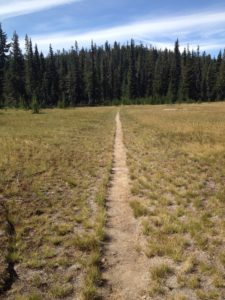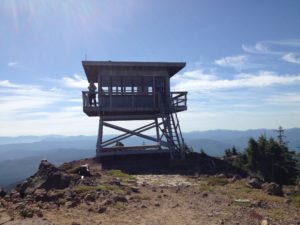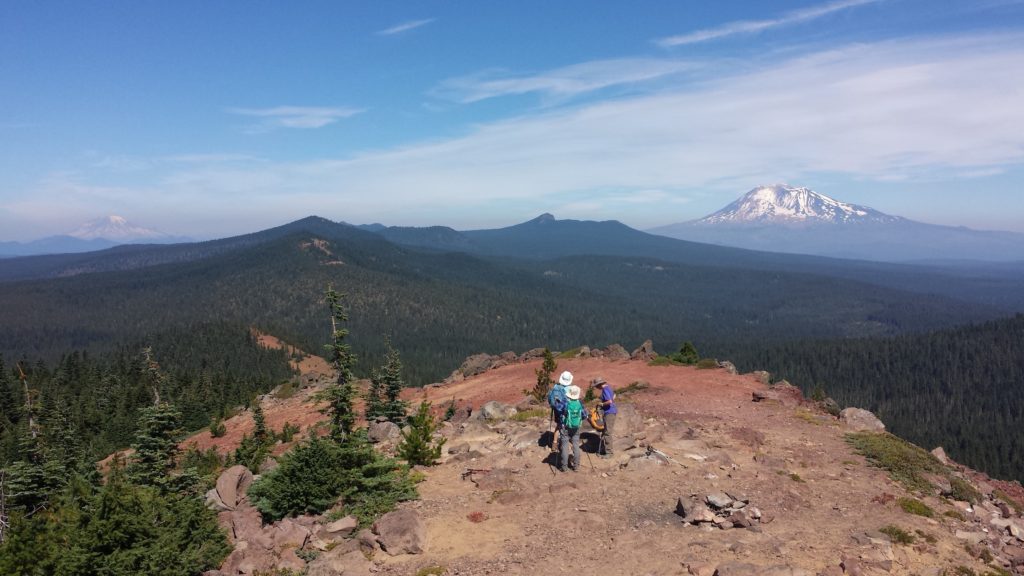
When I wrote about fire lookouts for the Washington Trails Association magazine in 2008, the Evergreen Mountain lookout was one of only two lookouts that guests could rent in Washington. I have climbed to lookouts on Kelly Butte, Oregon Butte, Columbia Peak, Desolation Peak, Red Mountain, Mount Pilchuck, and Heybrook but I had never been to Evergreen. In September, the best season for mountain hiking–no bugs, less heat–I made the trek with a stalwart hiker, photographer, and driver friend.
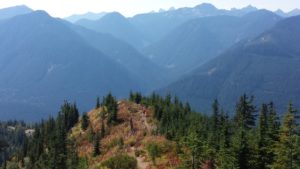 The drive, in my friend’s high-clearance “Beast,” was as much a challenge as the hike–fifteen miles of gravel road, two and a half hours from Seattle to the trailhead west of Stevens Pass. The last nine miles are very narrow, with creek crossings (on bridges or otherwise), sharp drop-offs on the passenger side (don’t look!) and grass growing down the middle track. But it was elevation gain, carrying us up to more than 4000 feet. Driving down, the road didn’t seem so bad, especially since we never met another vehicle, coming or going. (There was one other parked at the trailhead, three young women from Bothell area).
The drive, in my friend’s high-clearance “Beast,” was as much a challenge as the hike–fifteen miles of gravel road, two and a half hours from Seattle to the trailhead west of Stevens Pass. The last nine miles are very narrow, with creek crossings (on bridges or otherwise), sharp drop-offs on the passenger side (don’t look!) and grass growing down the middle track. But it was elevation gain, carrying us up to more than 4000 feet. Driving down, the road didn’t seem so bad, especially since we never met another vehicle, coming or going. (There was one other parked at the trailhead, three young women from Bothell area).
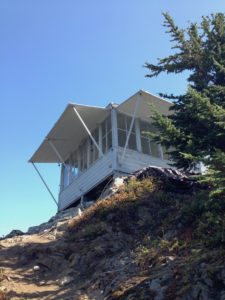 The hike, in September, was gorgeous–a cool, sunny, clear day, ranges and ranges of mountains looking into the Glacier Peak wilderness. Most of the wildflowers, except for pearly everlasting, were past their prime, but the fall reds and oranges complemented the blue sky. It’s a one and a half mile climb, with a brief respite in a saddle. The lookout is undergoing restoration but is listed as available for bookings between August 1 and October 1 most years at www.ReserveUSA.com. The lookout is classic, an oasis of human presence in the Big Sky.
The hike, in September, was gorgeous–a cool, sunny, clear day, ranges and ranges of mountains looking into the Glacier Peak wilderness. Most of the wildflowers, except for pearly everlasting, were past their prime, but the fall reds and oranges complemented the blue sky. It’s a one and a half mile climb, with a brief respite in a saddle. The lookout is undergoing restoration but is listed as available for bookings between August 1 and October 1 most years at www.ReserveUSA.com. The lookout is classic, an oasis of human presence in the Big Sky.
